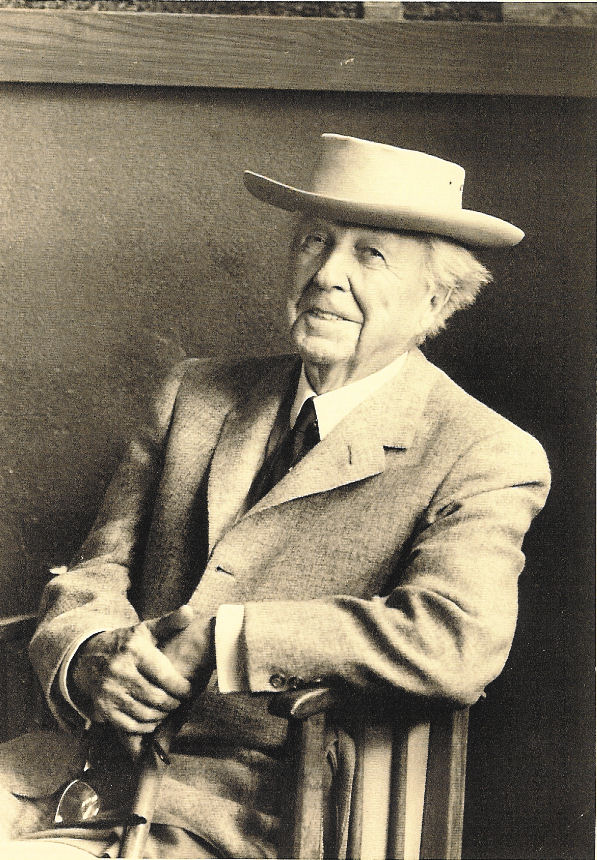
Frank Lloyd Wright’s Blueprint for Fiction
Last week I chaperoned my oldest daughter’s school field trip to Oak Park to visit Frank Lloyd Wright’s home and studio. Having lived in the Chicago area for over sixteen years, I still had not visited that landmark. I welcomed the opportunity to check that off my “To See and Do” list. Of course I had heard of Frank Lloyd Wright but had never really learned about him.
As a result of this visit, I have great respect for this extraordinary architect who left us with a legacy of not only how to build extraordinary houses but how to build a great novel. So here are some tips you can apply to your writing:
1) Make your novel organic. FLW’s approach to building a home was that it must feel organic to the landscape. Natural, not forced. As a child growing up in Wisconsin, he learned to admire and love nature. When he built his home and studio, there was a large willow tree on the property between the two buildings. Instead of cutting it down, FLW made holes in the studio to accommodate the branches so they could grow inside. As novelists, we should allow our stories, characters and settings to feel organic to the reader.
2) Incorporate that which influences you. As a child, FLW loved to play with Froebel blocks. The geometric shapes are seen throughout the homes and structures he built. As an adult, he loved Japan. The tour guide even mentioned that he would ride horses in his kimono. Attached to the walls of the barreled ceiling family room, FLW designed stylized lotus flower lights. He hated clutter which blocked the flow of a room. With that in mind, he suspended the large portion of his grand piano through a wall and over a back staircase so the family room would have more space. Are there areas in our writing that we can de-clutter? What influences you? Do you include what you love in your books? What influences your characters? How do you incorporate those influences into the organic flow of your novel?
3) Create a “path of discovery”. FLW wanted clients to understand and discover him. He was a non-conformist, not a cookie cutter architect. His studio was not easily accessible even though it faced Chicago Avenue. Clients would have to find the entrance to the loggia which displayed four key symbols of his life and work: The Tree of Life, The Book of Knowledge, Wisdom and Fertility of Creativity. Two commissioned sculptures bookend the roof of the loggia. These sculptures represent man breaking thru bonds of convention. As novelists, we should also include a path of discovery in our own writing. We don’t have to conform to formulaic writing. We too can break the molds of convention with different techniques. Be an innovator. FLW created the first drafting table that tilted! His back and shoulders were getting too tired from constantly bending over the flat table. He found a need and innovated a solution.
4) “Truth is Life”. Those are the words carved onto FLW’s living room fireplace tucked within an inglenook. That was his personal creed – I guess a pre-curser to “keeping it real.” As novelists, we should incorporate this mantra and make the characters true to themselves and to those around them. He incorporated this unhidden truth within his structures. In his octagonal shaped studio, he exposes the chains and balls which hold the octagonal walls in place. He wasn’t afraid to expose truth even when it might not be considered beautiful.
5) Leave a lasting mark. FLW wanted to have a motto in every room, but his wife, Catherine allowed him only one, and that was on the fireplace. He of course had a motto in his studio. Here is what it says: “Ye’ve left a glimmer still to cheer the man – the artifex that holds in spite o knocks and scale o friction waste and slip and by that light now mark my word we’ll build the perfect ship.” Frank Lloyd Wright left an indelible mark with the homes and buildings that he designed. As novelists, we too have the opportunity to “build the perfect ship” and leave a mark in the hearts and minds of our readers.
In recognition of Frank Lloyd Wright’s love of Japan, let’s feature a delicious recipe that perhaps he might have enjoyed.
Seared Tuna with Japanese Salsa
Recipe courtesy Sushi Katsu-Ya
* Cook Time: 5 min
* Level: Easy
* Yield:4 servings
Prep Total: 20 min
Sauce:
1 cup soy sauce
1 cup rice vinegar
2 tablespoons plus 2 teaspoons sesame oil
2 teaspoons sugar
1 tomato, finely chopped
8 cilantro sprigs, finely chopped
1 red onion, finely chopped
4 (6-ounce) fresh tuna fillets
1/4 teaspoon kosher salt
1/4 teaspoon freshly ground pepper
4 teaspoons vegetable oil
2 avocados, sliced 1/4-inch thick
Mix all the ingredients for the sauce. Add the chopped tomato, cilantro and onion. Season the tuna very well with salt and pepper. Heat a large skillet over high heat and add the vegetable oil. When the oil is hot, sear the tuna for 30 seconds on each side. Remove from heat and slice the tuna into 1/4-inch slices. To serve, neatly arrange the tuna slices and avocado slices on a plate and drizzle the sauce over the tuna.
Hi Margaret,
ReplyDeleteFLW was certainly a dashing man! And who would have guessed that your daughter's field trip would be such an educational opportunity for you as well!
Thanks for great tips from FLW. Suprisingly profond tips from an architech. Maybe building a house and a novel have alot in common.
Now I feel motivated to get back to my own writing!
Carol Tobin
Amazing post - I made the Tuna recipe and it was delish!!!
ReplyDelete